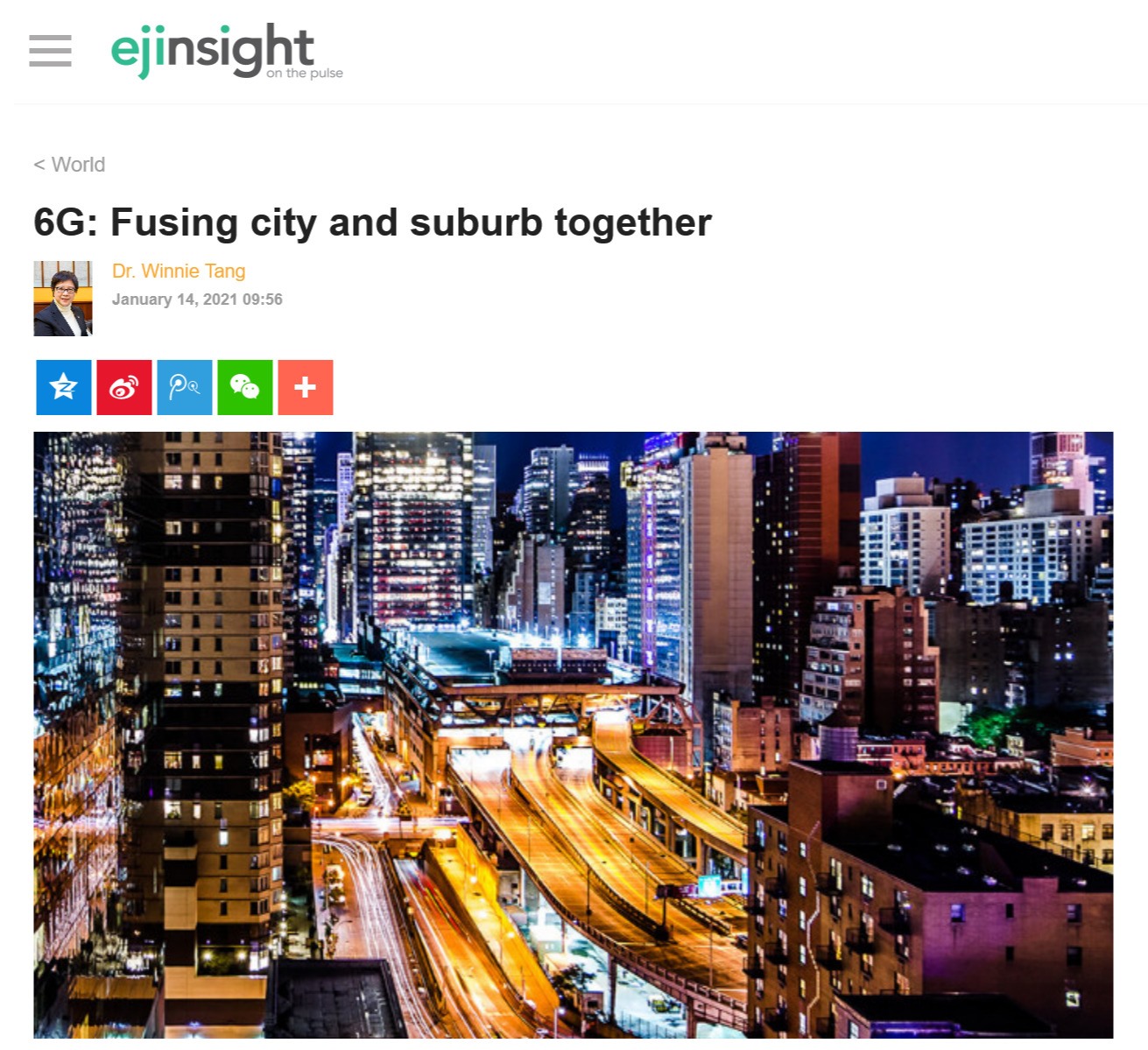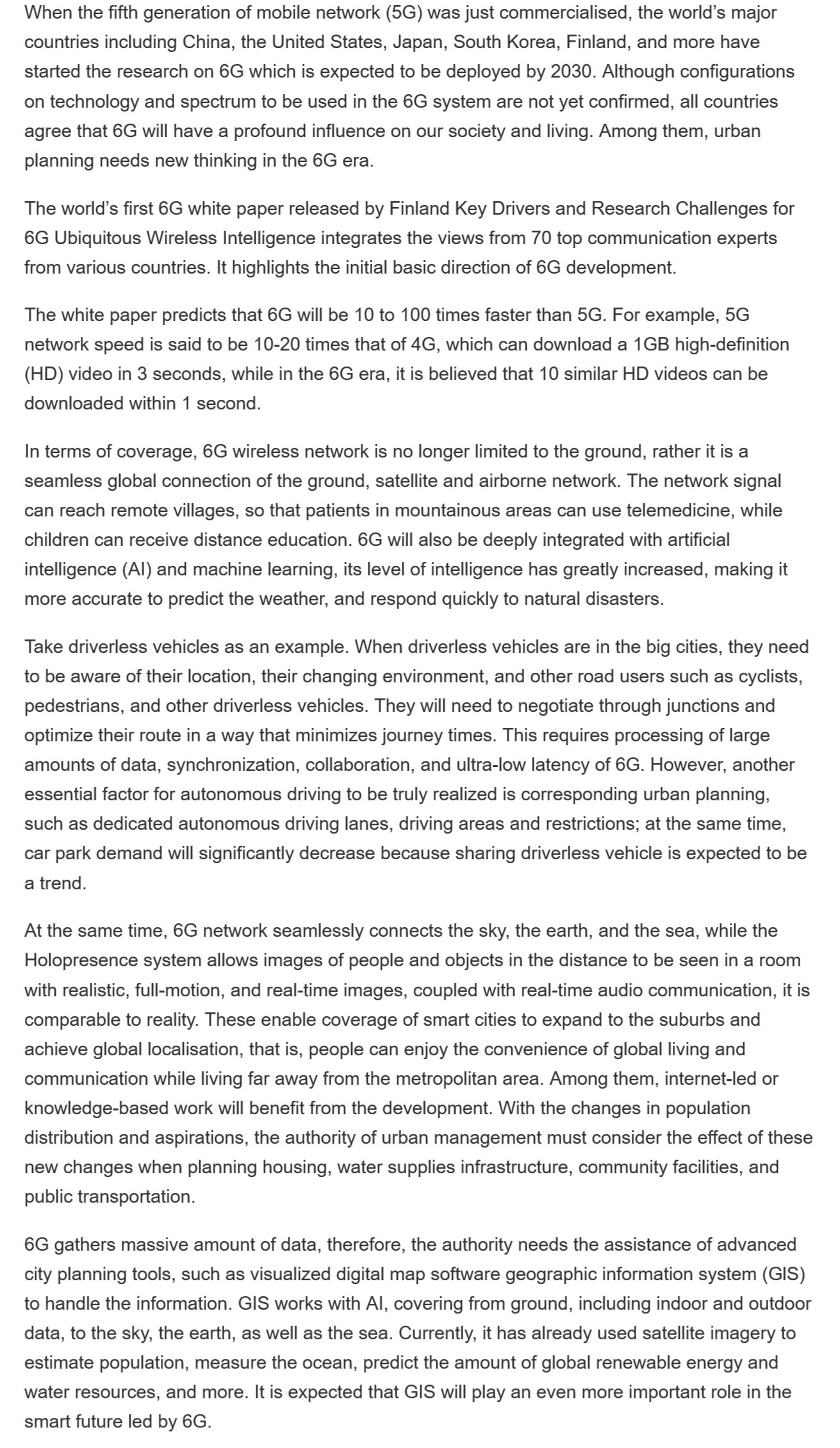網上版請按此


6G: Fusing city and suburb together
When the fifth generation of mobile network (5G) was just commercialised, the world's major countries including China, the United States, Japan, South Korea, Finland, and more have started the research on 6G which is expected to be deployed by 2030. Although configurations on technology and spectrum to be used in the 6G system are not yet confirmed, all countries agree that 6G will have a profound influence on our society and living. Among them, urban planning needs new thinking in the 6G era.
The world's first 6G white paper released by Finland Key Drivers and Research Challenges for 6G Ubiquitous Wireless Intelligence integrates the views from 70 top communication experts from various countries. It highlights the initial basic direction of 6G development.
The white paper predicts that 6G will be 10 to 100 times faster than 5G. For example, 5G network speed is said to be 10-20 times that of 4G, which can download a 1GB high-definition (HD) video in 3 seconds, while in the 6G era, it is believed that 10 similar HD videos can be downloaded within 1 second.
In terms of coverage, 6G wireless network is no longer limited to the ground, rather it is a seamless global connection of the ground, satellite and airborne network. The network signal can reach remote villages, so that patients in mountainous areas can use telemedicine, while children can receive distance education. 6G will also be deeply integrated with artificial intelligence (AI) and machine learning, its level of intelligence has greatly increased, making it more accurate to predict the weather, and respond quickly to natural disasters.
Take driverless vehicles as an example. When driverless vehicles are in the big cities, they need to be aware of their location, their changing environment, and other road users such as cyclists, pedestrians, and other driverless vehicles. They will need to negotiate through junctions and optimize their route in a way that minimizes journey times. This requires processing of large amounts of data, synchronization, collaboration, and ultra-low latency of 6G. However, another essential factor for autonomous driving to be truly realized is corresponding urban planning, such as dedicated autonomous driving lanes, driving areas and restrictions; at the same time, car park demand will significantly decrease because sharing driverless vehicle is expected to be a trend.
At the same time, 6G network seamlessly connects the sky, the earth, and the sea, while the Holopresence system allows images of people and objects in the distance to be seen in a room with realistic, full-motion, and real-time images, coupled with real-time audio communication, it is comparable to reality. These enable coverage of smart cities to expand to the suburbs and achieve global localisation, that is, people can enjoy the convenience of global living and communication while living far away from the metropolitan area. Among them, internet-led or knowledge-based work will benefit from the development. With the changes in population distribution and aspirations, the authority of urban management must consider the effect of these new changes when planning housing, water supplies infrastructure, community facilities, and public transportation.
6G gathers massive amount of data, therefore, the authority needs the assistance of advanced city planning tools, such as visualized digital map software geographic information system (GlS) to handle the information. GIS works with AI, covering from ground, including indoor and outdoor data, to the sky, the earth, as well as the sea. Currently, it has already used satellite imagery to estimate population, measure the ocean, predict the amount of global renewable energy and water resources, and more. It is expected that GIS will play an even more important role in the smart future led by 6G.
Dr. Winnie Tang
Adjunct Professor, Department of Computer Science, Faculty of Engineering; Department of Geography, Faculty of Social Sciences; and Faculty of Architecture, The University of Hong Kong